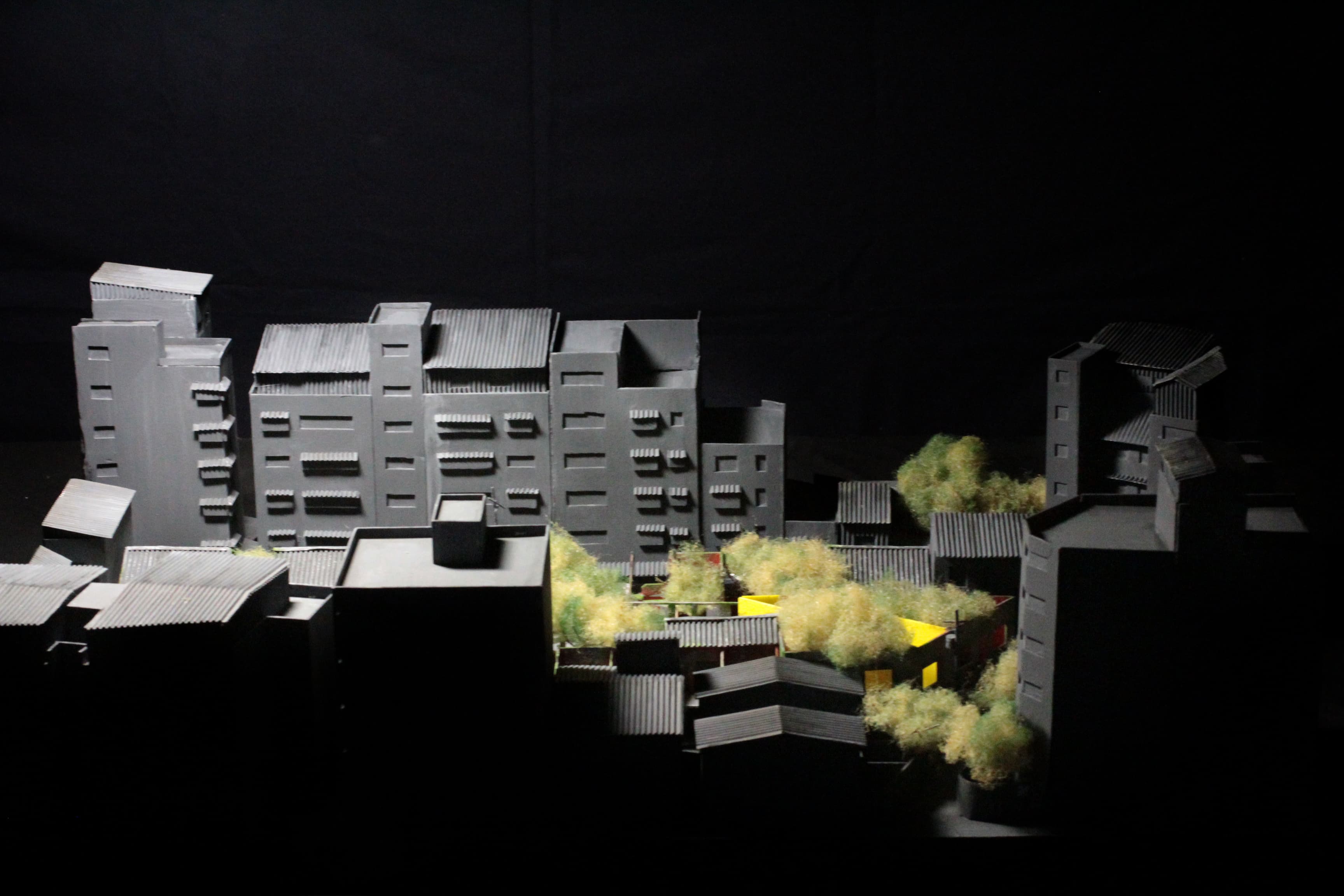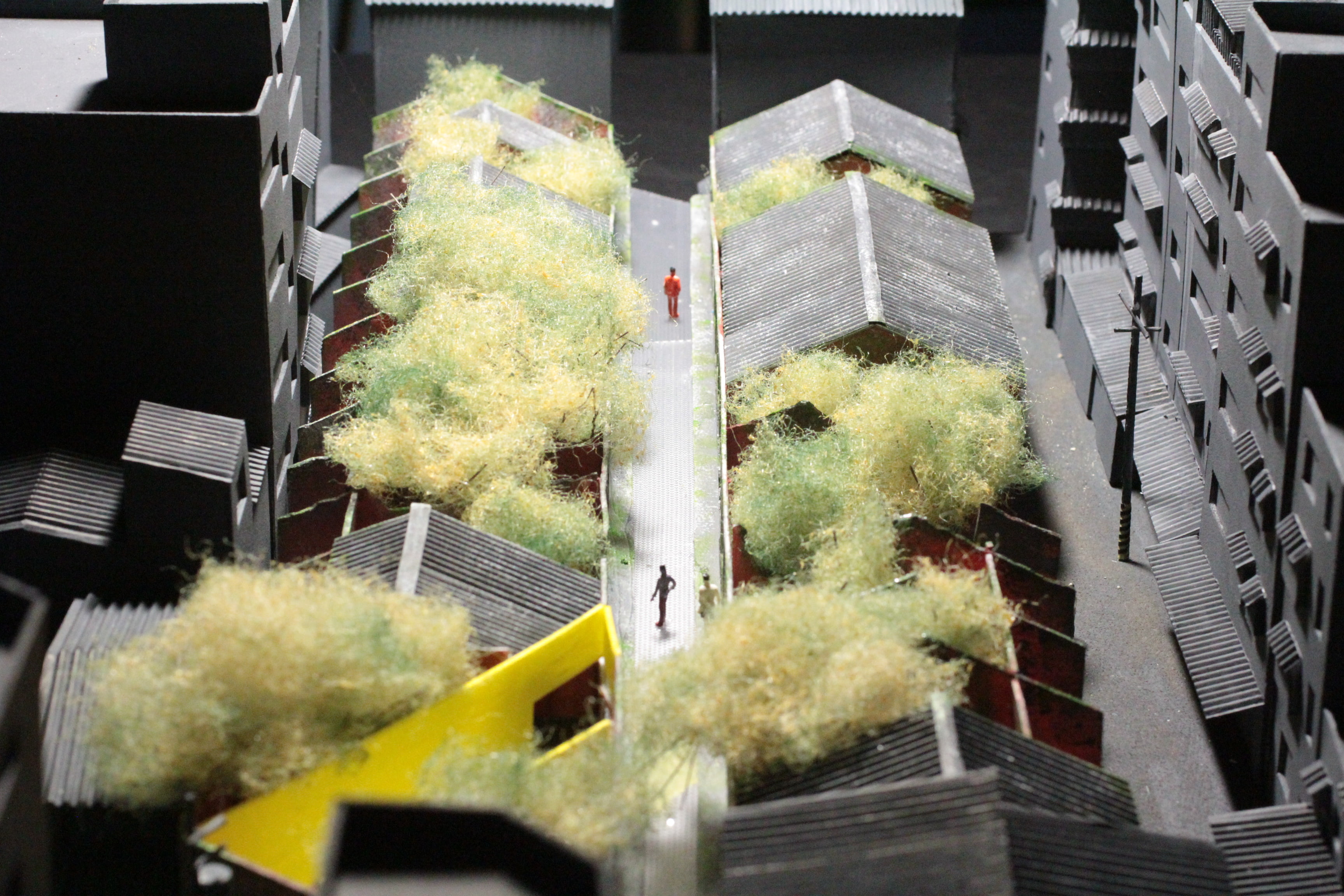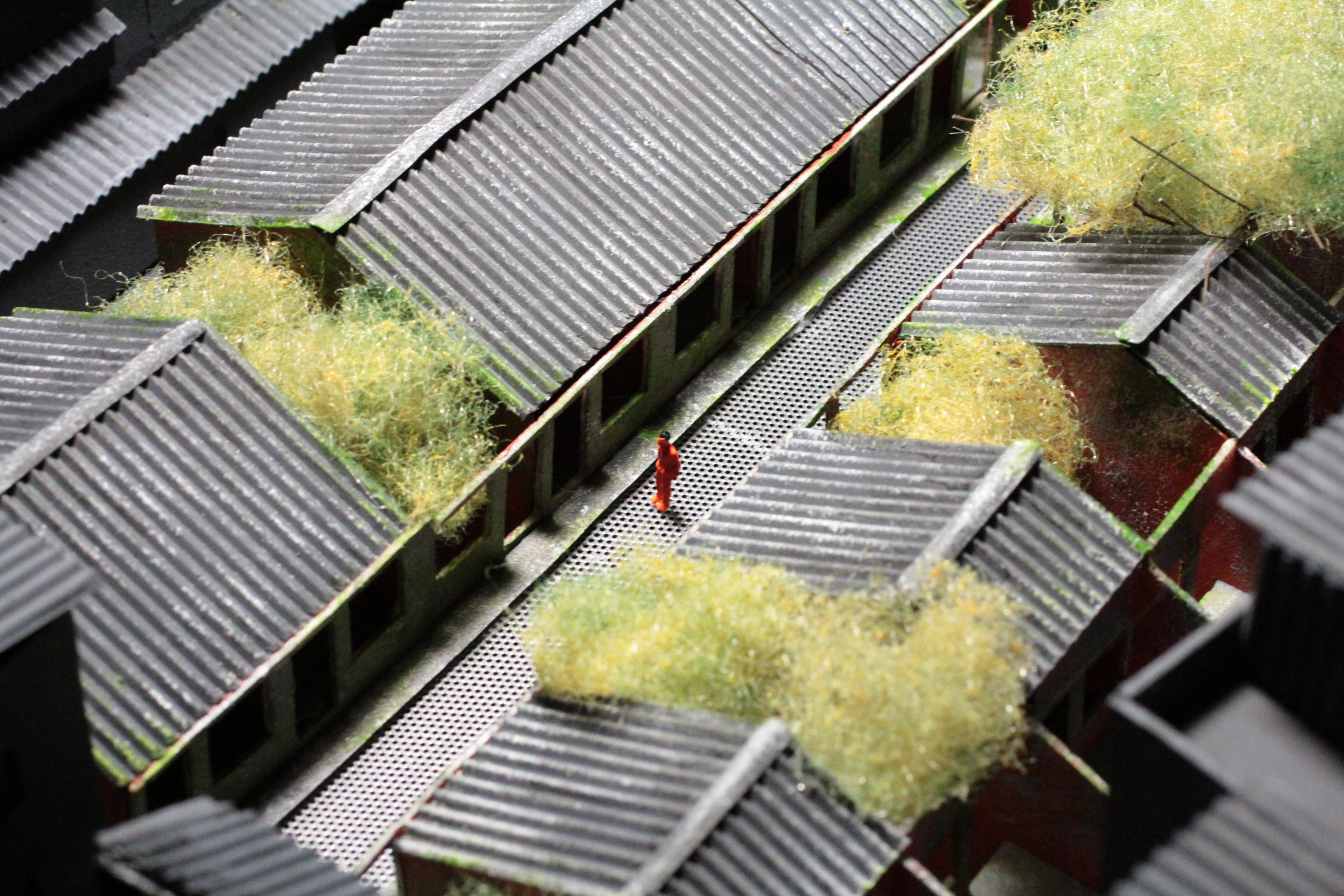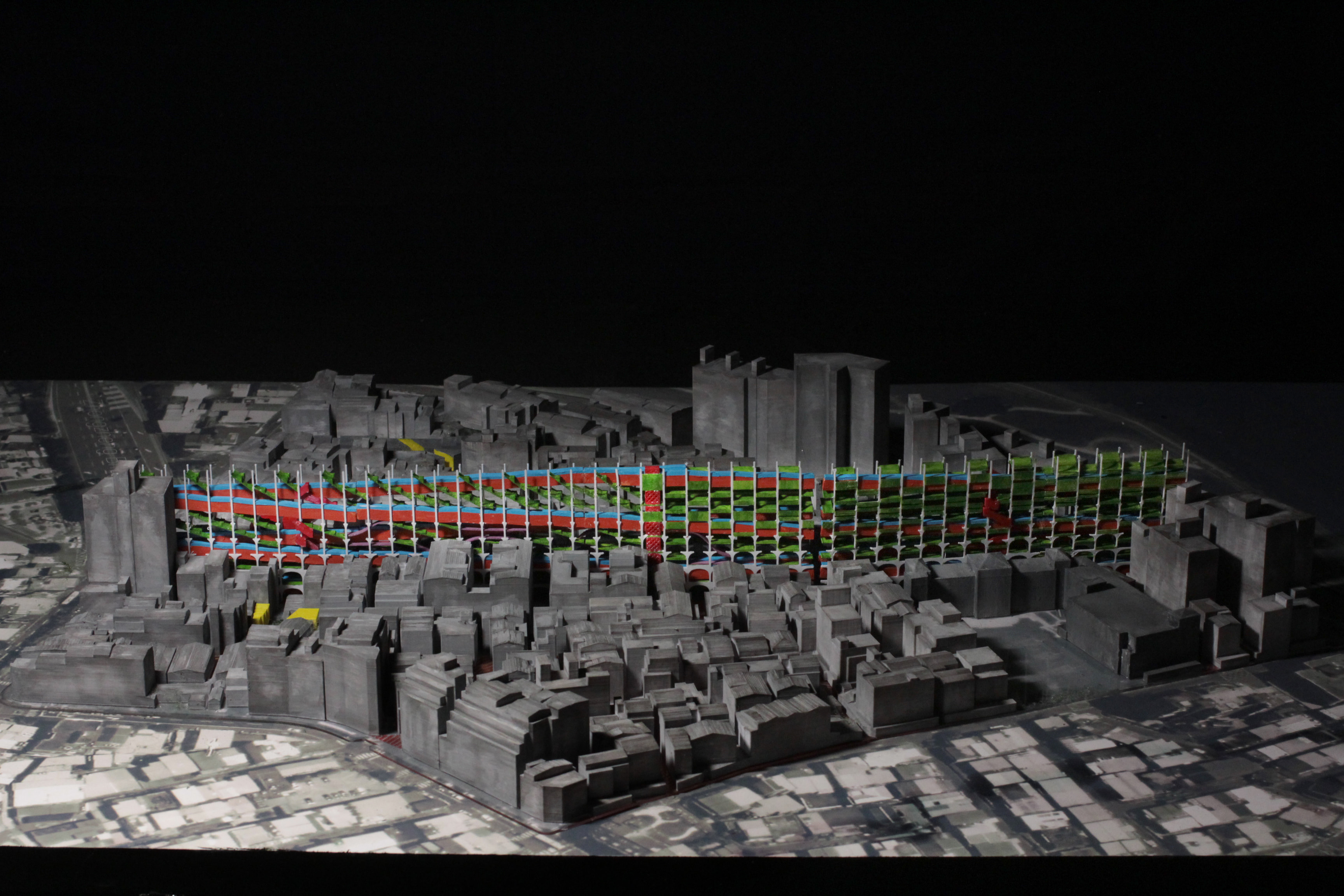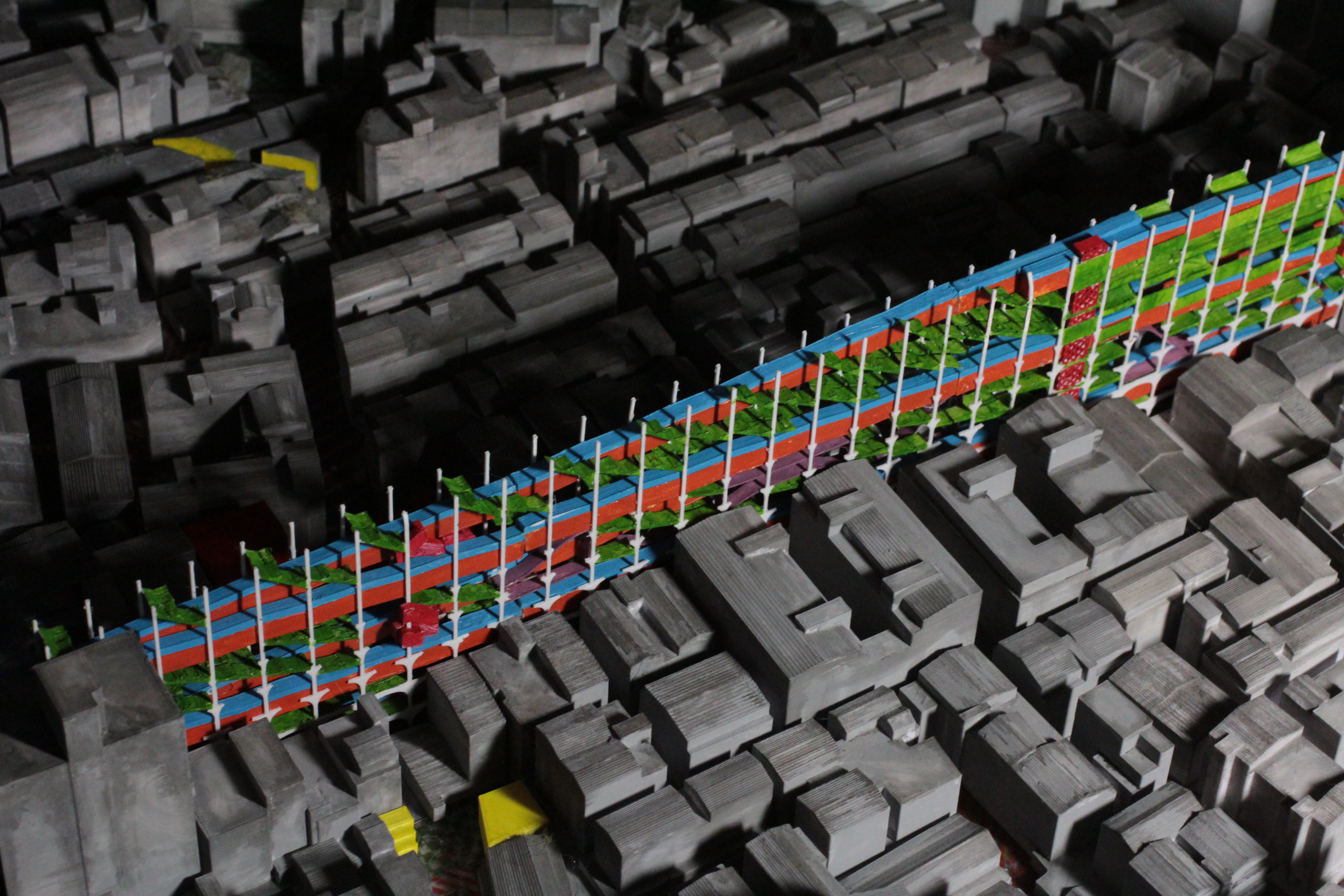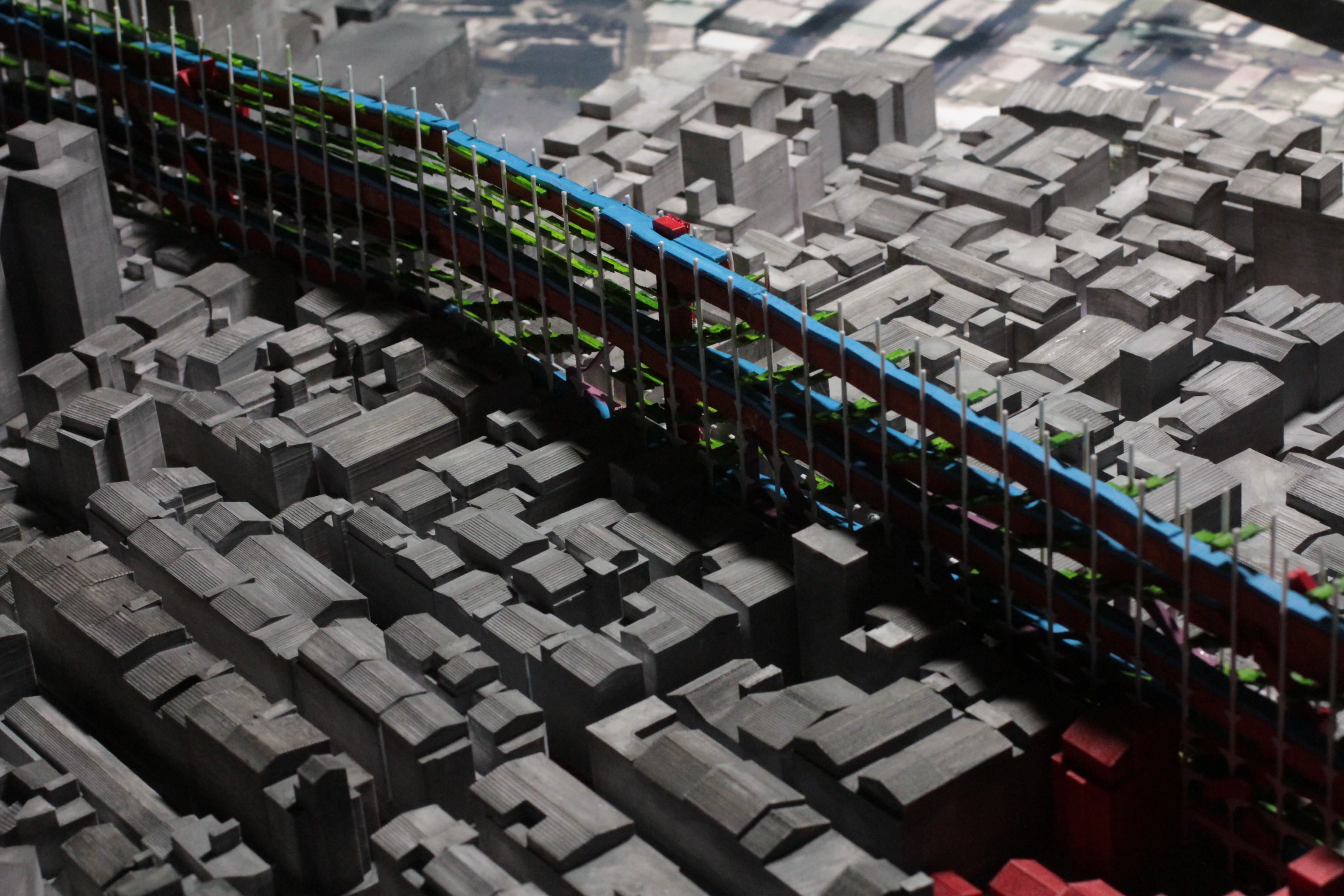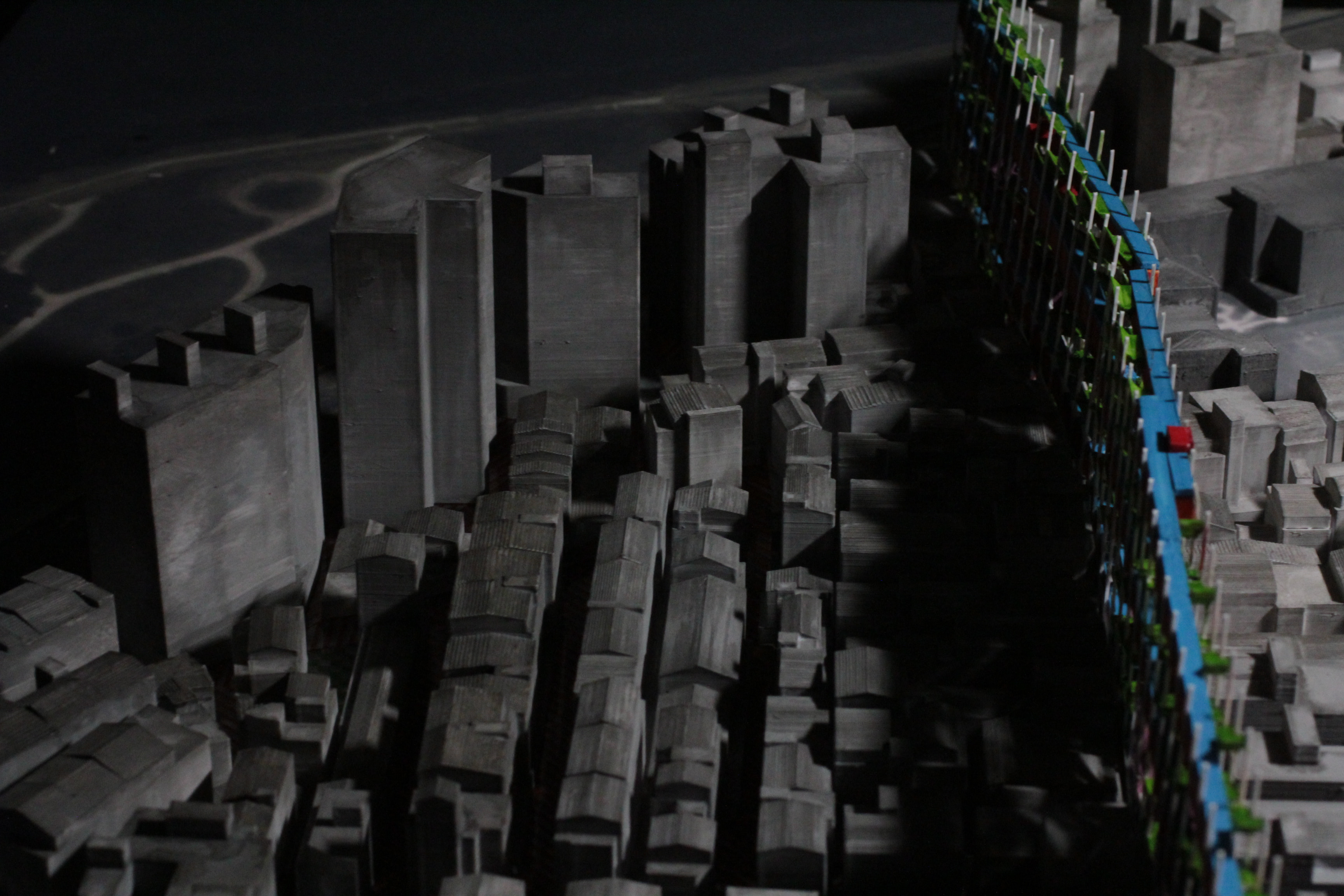Yonghe, once planned as a garden city, has over time become a city with the highest population density in Taiwan. However, in this extremely tense city, a place which has pleasant shade that is suitable for afternoon walk has been born by the name of “Bo-Ai Art Street”.
This art street originated from Yang-San-Lang’s painting studio. Under the original urban planning, a planned road was supposed to cut through the studio, divide it into two half. In order to preserve the studio, a group of teachers dedicated to transform the street in front of the studio based on the idea of “art can change the city” , attempting to prove the value of the studio. As a result, the studio really became a city designated monument, and what disappeared instead was the defiant planned road. But I think the result is two-sided.
The early Bo-ai Street was an established road connecting the land to the river, creating the pattern of the city on both sides. Nevertheless, the art street now makes Bo-ai street seem independent from Yonghe, and even convey a negative attitude of rejecting this unadorned city. Therefore, I believe that the combination of art and city must be based on the city.
The project, whose site is set in this city, involves reading the context of the city and then making a choice about what could stimulate a dialogue for the silent city. I am a writer, just like the graffiter. I walked around Yonghe, observing the city which was once just like a blank sheet of paper being planned by urban designer and at the same time reflecting the reality of livelihood like a jungle, to perceive what each stroke on the original urban plan meant now. Yonghe is really ridiculous. Even if I go to the same site for several times, I can find new discoveries every time, which cracks me up. After having enough fun, it’s time to think about how to “Rewrite” it.
